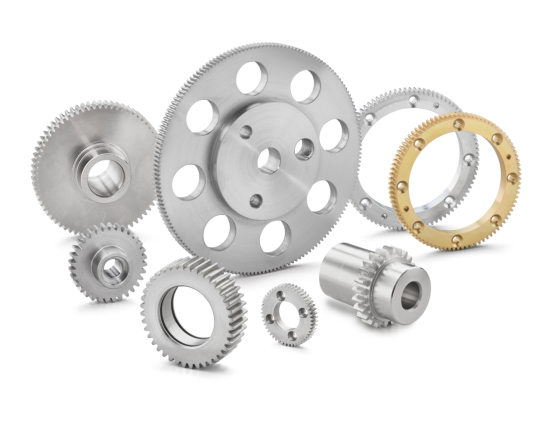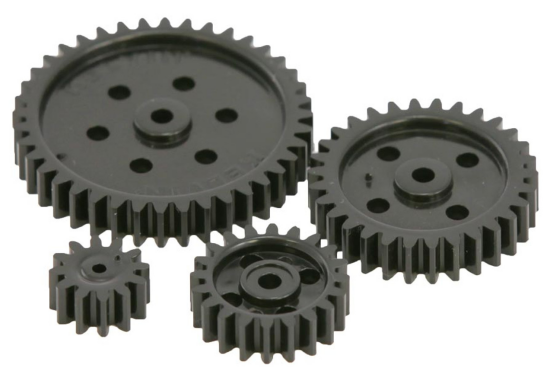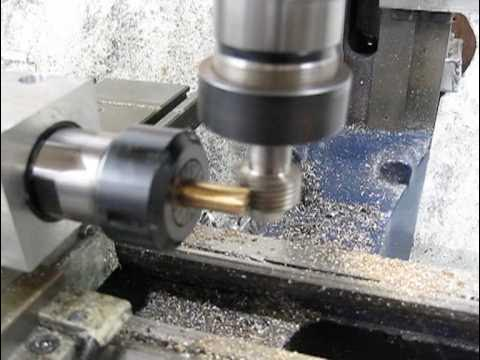Precision Gearing 101: From Parameters to Machining
 Jun 26,2025
Jun 26,2025

Looking for a clear roadmap to precision gear design? This guide strips away jargon and walks you from core parameters such as tooth count (Z) and module (m) all the way to micro-module machining, inspection, and sourcing. Whether you’re an engineer refining motion-control loops or a buyer drafting tight-tolerance RFQs, the next few minutes will arm you with data-backed tips that keep miniature gears quiet, durable, and cost-effective.

What Is a Precision Gear?
Precision gears are small-module wheels held to at least AGMA 10 or ISO 6. Compared with lawn-mower gears, a drone-gimbal pinion shows how tight tolerances slash noise, boost life, and justify higher price for true precision duty.
Role of Precision Gears in Motion Control
Even a five-micron pitch error shakes a servo loop; precision gears keep pick-and-place nozzles on target, align a luxury watch’s second hand perfectly, and stay repeatable under high-cycle loads.
Benefits of Using Precision Gears
- Lower mesh noise by up to 6 dB, keeping miniature robots and watch movements silent in use.
- Hold backlash below 0.03 m, delivering repeatable positioning for pick-and-place heads and optical stages.
- Carry equal torque in 30 %–50 % lighter polymer or aluminum housings, extending battery life in UAVs and handheld tools.
Core Gear Parameters—A Quick-Start Glossary
Six key numbers define every miniature gear; know each rule-of-thumb before you issue an RFQ.
Tooth Count (Z): Balancing Speed and Torque
A 10-tooth pinion driving a 40-tooth gear gives 4:1 reduction; fewer than 17 teeth on a 20° spur risk undercut and weak roots in small tooth count designs.
Module (m): Setting Gear Size & Strength
Pitch diameter = m × Z, so dropping m from 1 to 0.9 shrinks size 10 %. Face width must rise about 15 % to keep bending strength in precision duty.
Pressure Angle: Sharing Load Safely
Twenty-degree angles dominate micro-module gears; switching to 25° boosts torque in EV reducers but adds axial thrust, demanding stiffer housings.
Helix Angle: Smoothness vs. Axial Thrust
A 15° helix in printer gears yields quiet meshes; aerospace drives may use 30°, trading noise for load and accepting thrust that polymer/aluminum housings must brace against.
Face Width: Boosting Load Capacity
Rule of thumb: face width ≈ 8 × m. With m 0.5 miniature gears, a 4 mm face maintains good contact while still fitting tight watch movements.
Quality Grade (AGMA/ISO): Defining Precision Duty Levels
AGMA Q12 or ISO 6 is common for micro-module watch gears; Q13 pushes satellite imagers to sub-10 µm pitch error, while Q8 suffices for office printers.
| AGMA Quality Grade | ISO 1328 Grade | Allowable Total Pitch Error (µm) | Typical Use Case |
|---|---|---|---|
| Q8 | ISO 9 | ≤ 60 | Office printers, hobby drones |
| Q10 | ISO 8 | ≤ 35 | General industrial gearboxes |
| Q12 | ISO 6 | ≤ 15 | Watch movements, surgical robots |
| Q13 | ISO 5 | ≤ 10 | Space optics, satellite actuators |
Micro-Module Gears (m ≤ 1): Tiny Teeth, Big Impact
Micro-module gears pack more reduction into less space, letting watch movements and miniature encoders stay slim yet accurate.
Typical m Values in Luxury & Smart-Watch Movements
Center wheels use m 0.3; third wheels drop to m 0.2, while smart-watch motor pinions reach m 0.08. Tiny teeth squeeze more ratio into polymer housings and trim energy use.
Heat-Treat & Surface Finish for Sub-1 mm Teeth
Vacuum carburized 16MnCr5 to 60 HRC, then micro-shot peened, leaves a 0.4 µm Ra finish that resists pitting in m 0.7 pinions spinning 20 000 rpm inside aluminum actuators during long precision duty cycles.
Design Tips to Maintain Strength at Micro Scale
Apply profile shift about +0.3 m, keep root fillet radius above 0.2 m, and check stress with 3-D FEA to avoid breakage in miniature gears with small tooth count.
| m (-) | Pitch Ø of 12-Tooth Pinion (mm) | Typical Product | Housing Material |
|---|---|---|---|
| 0.08 | 0.96 | Smart-watch step motor | Polymer |
| 0.20 | 2.40 | Luxury watch center wheel | Brass |
| 0.30 | 3.60 | Medical micro-pump | Aluminum |
| 0.50 | 6.00 | Miniature UAV gimbal | Aluminum |
| 0.80 | 9.60 | High-precision encoder | Steel |
Designing Sub-20-Tooth Gears Without Undercut
Sub-20-tooth pinions appear in planetary sets and watch escapements; preventing undercut preserves strength and smooth involute contact.
Profile Shift to Reinforce Thin Tooth Roots
Shifting a 12-tooth pinion by +0.5 m thickens roots and boosts bending safety factor roughly 25 % without altering center distance or gear ratio significantly.
Parameter Limits to Control Backlash & Noise
Aim for backlash 0.03–0.05 m, keep lead error under five microns, and use selective shims to hold spec when miniature gears are installed in polymer housings.
Finite-Element Checks for Small Tooth Count Pinions
Free tools like MITCalc compare 3-D mesh stress to Lewis results; add 30 % margin because defects loom larger at micro-module sizes in watch-gear development.
Material & Housing Choices: Steel, Polymer, or Aluminum?
Material choice dictates weight, corrosion, and noise; compare steel gears to lightweight polymer/aluminum housings before locking design.
Common Precision Gear Material Choices
16MnCr5 Case-Hardening Steel —the go-to alloy for micro-module pinions; a 60 HRC case and tough core give >1 GPa contact strength without brittleness.
PEEK + 30 % Glass Fiber —favored in medical micro-pumps and smart-watch gears; it runs quiet, self-lubricates, and keeps shape up to 240 °C while weighing half of aluminum.
7075-T6 Aluminum —popular for drone gimbal spur sets; its 505 MPa yield strength and low density slash inertia yet remain easy to CNC to AGMA Q12 accuracy.

When Alloy Steel Delivers Maximum Precision Duty
Case-hardened 16MnCr5 at 60 HRC offers >1 GPa contact strength; pair it with hard-chrome shafts for satellite optics during fifteen-year mission life cycles.
| Material | Density (g/cm³) | Yield Strength (MPa) | Thermal Expansion (µm/m·K) | Comments |
|---|---|---|---|---|
| 7075-T6 Aluminum | 2.8 | 505 | 23 | High stiffness, easy CNC |
| PEEK + 30 % GF | 1.5 | 185 | 47 | Self-lubricating, good for battery tools |
| PA 12 SLS Print | 1.0 | 48 | 100 | Rapid prototyping only |
| Ti-6Al-4V | 4.4 | 880 | 9 | Maximum rigidity, costly |
Why Polymer/Aluminum Housings Reduce Weight
Swapping a steel enclosure for PEEK or machined aluminum cuts gear-set mass from 100 g to 42 g in surgical robots, greatly slashing inertia and improving ergonomics.
Coatings and Hardening That Protect Low-Module Teeth
Diamond-like carbon halves friction versus TiN; choose DLC for m 0.8 UAV gears, but TiN suffices for office printers where duty and budgets stay tight.

Manufacturing Miniature Gears—Process vs. Parameter
Design, hob, grind, test, then iterate; understanding the chain prevents quotation surprises. Of course, you can also do custom metal machining quotes in online cnc quote. You can get accurate and professional quotes from TUOFA CNC Machining.
CNC Hobbing: Minimum Module & Tolerance Range
Swiss micro-hobbers reach m 0.2 with ±6 µm composite error; a 20-tooth pinion runs in 90 s—balancing cost and accuracy for medium-volume drone controls today.
Wire EDM for Fine Pitch & Complex Profiles
Wire EDM cuts m 0.1 gears from hardened steel without burrs; five-minute cycles mean it suits complex sensor gears in aerospace test rigs requiring reliability.
Micro-Injection Molding for Polymer Pinions (m ≈ 0.3–0.5)
Shrinkage varies 0.2 %; run mold-flow, add diameter offsets, and control cavity temperature to hold AGMA Q10 on PBT pinions for precise camera-lens focus.
Inspection & Tolerances: Measuring µm-Level Errors
Micron-level data prevents warranty surprises; choose testers before shipments leave the factory.
Runout, Pitch, and Profile Error—How They’re Calculated
Use double-flank blocks for working pitch, then split runout and profile with software; a 30 mm pitch spur should stay within 8 µm composite error for precision duty.
CMM vs. Dedicated Gear Tester Accuracy Bands
Bridge CMMs hold ±2 µm on diameter but scan slowly; dedicated analyzers hit ±0.5 µm and chart lead error faster, justifying investment at large production volumes.
Acceptable Limits for High-Cycle Precision Duty
For AGMA Q12 gears, keep total pitch error ≤ 15 µm and runout < 4 µm to survive ten-million cycles without audible wear or chatter.
Lubrication Rules by Module, Load, and Material
Wrong oil wipes teeth; match lubricant to micro-module size and duty before selecting grease.
Choosing Low-Viscosity Oils for Micro-Module Meshes
ISO VG 15 synthetic flows between m 0.5 steel gears at −20 °C; plot viscosity versus temperature to ensure film stays >0.1 µm for reliability.
Solid Lubes That Pair Well with Polymer Gears
PTFE-filled acetal gears run dry inside vending machines; resin-dispersed lubricant stops oil migration and keeps counters clean in public food-service areas.
Life-Cycle Prediction Using Z, m, and Contact Stress
Derate Hertzian stress 10 % for lube uncertainty; gears meeting σ < 600 MPa at 10⁷ cycles usually outlast polymer housings in high-speed camera shutters worldwide.
Sourcing Checklist: Specifying Parameters on Your RFQ
Clear RFQs speed quotes; provide full parameters so suppliers cut miniature gears right first time and economically.
Must-Include Data: Z, m, Grade, Material, Heat Treat
Example: “Gear, m 0.5, Z 14, 20° PA, AGMA Q12, 16MnCr5, case-hardened 60 HRC, DLC coat”. Adding inspection and packaging notes avoids mismatch during tight project timelines.
Supplier Audit Points—Cleanroom, Traceability, Testing
Check ISO 7 assembly areas, barcodes, furnace charts, and tester certificates; a quick onsite audit often saves weeks of root-cause work for mission-critical watch or satellite drives.
Conclusion
Precision gears may be small, but their parameters—Z, m, angles, width, grade—govern noise, life, and cost. Master them early, collaborate with machinists, choose materials wisely, and your micro-module gearbox will serve precision duty with confidence.
FAQs on Precision Gearing
What’s the smallest module a CNC hob can cut reliably?
Most Swiss micro-hobbers reach m 0.2 with ±6 µm TCE; going smaller risks tool breakage, so shift to wire EDM or LIGA if you need m 0.05 gears for high-end watch escapements today.
How do I specify backlash for micro-module gears?
State clearance in millimeters, not percent. A 0.03–0.05 m window ensures mesh without binding; note whether the figure comes from single-flank or double-flank testing under room-temperature conditions.
Can polymer gears match steel life?
For low torque, glass-filled PEEK pinions in aluminum housings reach 5 000 hours. Above 80 °C or 50 N·mm torque, switch to carburized steel to avoid creep in continuous service tests.
Do I always need DLC coating?
If contact stress exceeds 800 MPa or lubricant volume is limited, DLC’s low friction cuts wear in precision duty; otherwise, standard case hardening and good oil often suffice for office equipment.
 Tel/WeChat:
Tel/WeChat:  Email:
Email: 
 Home
Home
 What Is a Flange? - From Types to Machining
What Is a Flange? - From Types to Machining 







